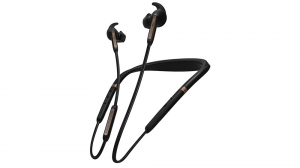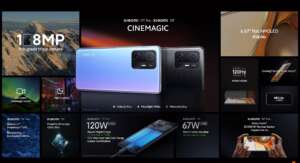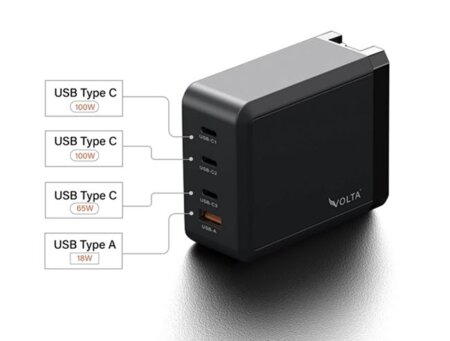Introduction
A design review does not require the physical product as long as there is sufficient data from the manufacturers, testers, expert sources, etc. The value of reviewing compiled design data is as good as the value of reviewing a physical product. One is focused on the design specs, while the other is on usage.
What is a review?
- To look at or examine (something) carefully, especially before making a decision or judgment. (from Dictionary)
- A report that gives someone’s opinion about the quality of a book, performance, product, etc.
The “something” can be anything, from a physical item to data or written documents. The deliverable can be a report, a decision (verdict), an opinion, a recommendation, or a judgment.
Product Design Reviews
Formal product design reviews are key milestones within a standard product development project whereby a design is evaluated against its requirements before moving on to the next sub-phase. A product launch or release will follow a successful design review.
There are also “informal” design reviews performed before a purchase, where potential buyers will research product design and specifications, other expert opinions, or sample test reviews. In recent years, there has been increasing popularity in “unboxing” reviews, where “reviewers” will open up a new box of products on video.
For products that have been in the market for some time, there will also be user experience feedback, especially on the shopping site, in the form of a “product review”.
In any case, a design review does not require the physical product as long as there is sufficient data from the manufacturers, testers, expert sources, etc. The value of reviewing compiled design data is as good as the value of reviewing a physical product. One is focused on the design specs, while the other is on usage.
Phase 1: Product Development Stage (Within a business)
The first phase occurs within the company that designs and manufactures the product. The design reviews are performed in-house by project team members and stakeholders and may include others, such as production leaders.
The design reviews may include several sub-phases, such as preliminary (PDR), critical (CDR), and final (FDR) design reviews. During the review, members will assess if the prototype design is acceptable and has met the design intent and target specifications.
After the final product design and mass production began, the company will produce marketing material to attract buyers to purchase their product.
Phase 2: Product Buying Stage (Between business and consumer)
In this phase, potential customers, product reviewers, or purchasing specialists will source products to meet their needs. The process involves typically identifying at least 3 competing products that are potential alternatives for in-depth review.
The review will compare the design specifications and prices to determine the most cost-effective option. If the order is large, the reviewer may acquire one or more samples to try out before deciding which one to order.
For a newly launched product for which we do not have a sample on hand:
- Expert decision: You can become an expert in a chosen niche product category and perform product design reviews.
- Research work: You can be a product researcher to compile, compare and review the information to deliver an unbiased verdict on the product. Such design review may also discuss the technology, alternative solutions, previous product versions, or other possibilities.
For a newly launched product, with a sample on hand:
- Early Tester: Such product reviews are performed by selected “Early Testers” who can get the product prior to the official marketing launch.
- As there is an actual product on hand, the review should focus 100% on the user experience because you are the readers’ eyes, ears, and writings who cannot touch the product.
- Such reviews do not require extensive research or expert involvement, even though these abilities may help with complex products.
For products already in the market for some time, for which we do not have a sample on hand:
- Sieve through thousands of user feedback to summarise the critical feedback.
- Read through expert reviews to summarise the key points.
- Some product review blogs on sports shoes posted reviews based on summarising other users’ feedback. This is an excellent way to add value for readers so they do not have to go through thousands of “product reviews” to look for informative comments.
Phase 3: Product Feedback Stage (Consumer only)
After buying and using the products, the buyer may provide feedback on the usage related to the function, durability, reliability, etc. This feedback ultimately affects the design, which will then be feedback to Phase 1 for the following product development phase.
Below is a summary of the different design reviews in the three phases of the product life cycle.
| Phase | Who | Input | Process | Output |
| Phase 1: Product Development | Project Team. Prototype Team. Production Team. Stake Holders. | R&D Customer inputs. Market data. Target specs. Product design. | Prototype production and testing. Design Reviews: – Preliminary – Critical – Final | Final approved design for mass production. |
| Phase 2: Sales Phase | External Purchaser. Product reviewer. End User. |
| Review design based on – Pros/Cons – Compare Alternatives – Desired Specs – Technology – Challenges – Achievements/Awards | Decision to buy Verdict Opinion |
| Phase 3: Feedback Phase | Confirmed buyer | Real user experience | – Shopping review – Forum feedback (e.g. Reddit) – Social media feedback |
The above covers the Type of Design Reviews in the generic product life cycle context.
Product Development Projects
Product development projects begin with a concept idea of the new product, which may include design sketches, CAD drawings, and a rough list of desired specifications.
Feasibility studies follow this to ascertain if the target specs are achievable based on current resources and technology or require additional cost, effort, and time to develop new capabilities. The output of this stage will include the project scope, schedule, and budget.
Design reviews are the key milestones in a product development project. It involves formal meetings and acceptance tests to verify that the prototype(s) in various development phases have each met the target design specifications.
As the prototypes may need to undergo several design changes and rework before being accepted, the design review can be broken up into three key phases to reduce project risks, such as loss of time, resources, or financial losses.
The following are the phases and types of design reviews in product development.
During Product Development
Product design reviews can only be conducted by the project team members.
1. Preliminary Design Reviews (PDR)
- Components prototype
- Mockup of a full or partial assembly
If the prototypes and components are rejected or need a rework, there may be a need to redo the PDR or have a PDR II.
2. Critical Design Reviews (CDR)
- The pre-final or beta version of the final product shall undergo an acceptance test to verify all critical design specs against the target specs.
- There should be very few minor changes required to finalize the product.
3. Final Design Reviews (FDR)
- If required, a final design review is conducted to verify any corrective actions made during the CDR.
- After the FDR is completed, the product is ready for serial production and rollout or release.
After Product Rollout
Post-Implementation Design Reviews
- The project team should conduct periodic PIDR reviews after the completion of the project. During the reviews, the project team shall discuss the issues raised from the following areas:
- Warranty claim
- Customer support team
- Problems raised by user reviews and feedback from websites, online stores, and blogs.
- Identify each of the problems raised.
- Identify the cause and effect of the problem via FMEA (Failure Mode and Effects Analysis)
- Are they design issues? If yes, the designers will need to review the remedy actions.
- Are they quality issues? If yes, the manufacturing dept. will need to review their IPQC process.
- Are the effects critical or safety-related? If yes, there could be a need to recall the affected batches or all the products.
- The project team should conduct periodic PIDR reviews after the completion of the project. During the reviews, the project team shall discuss the issues raised from the following areas:




